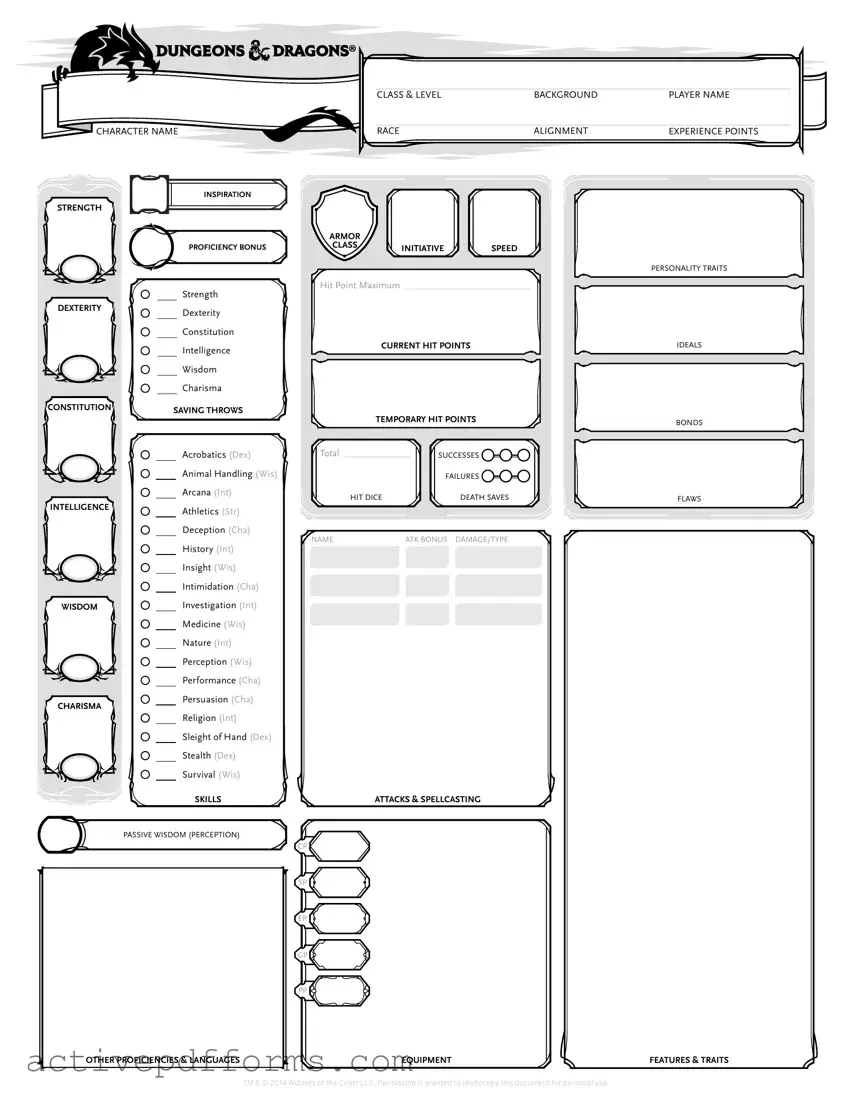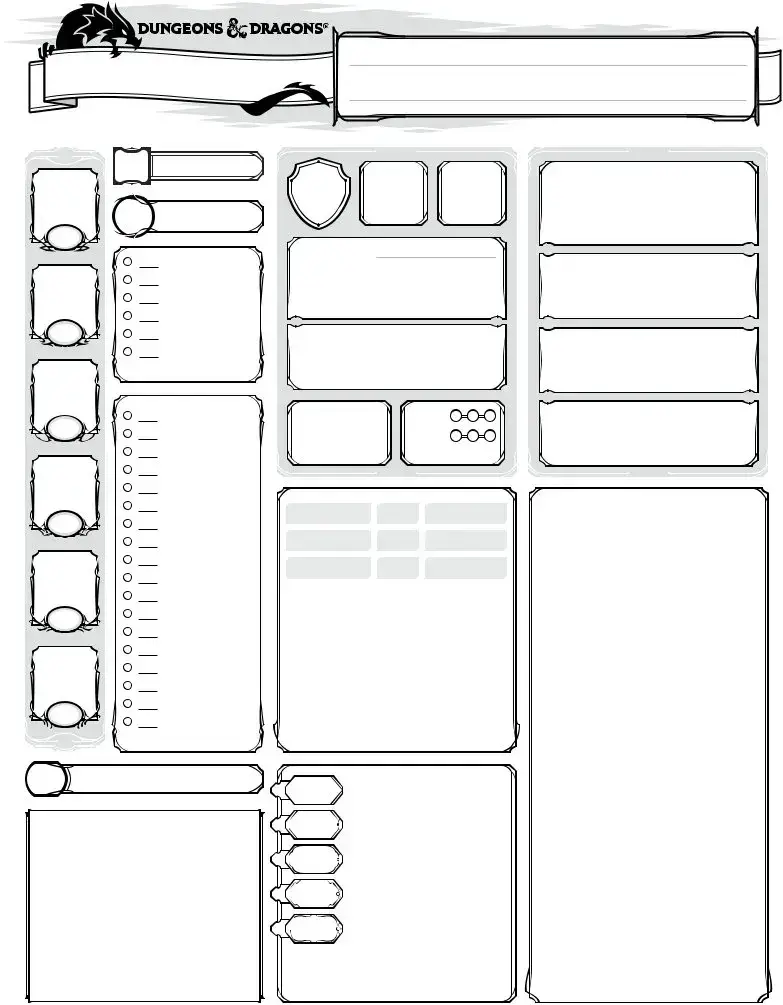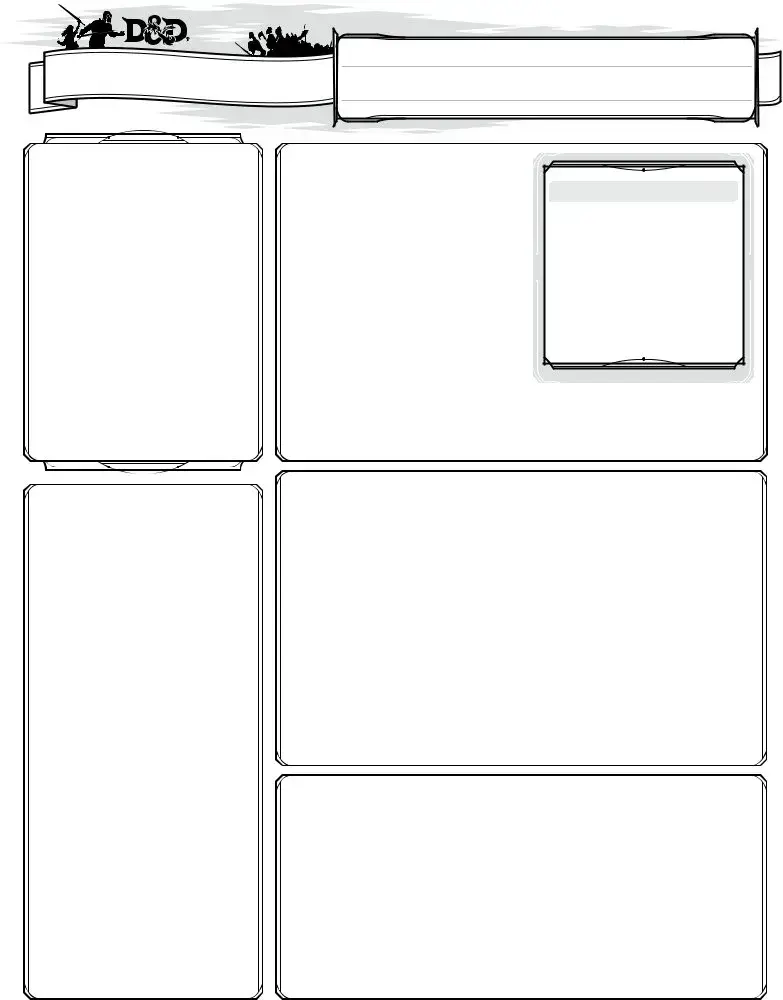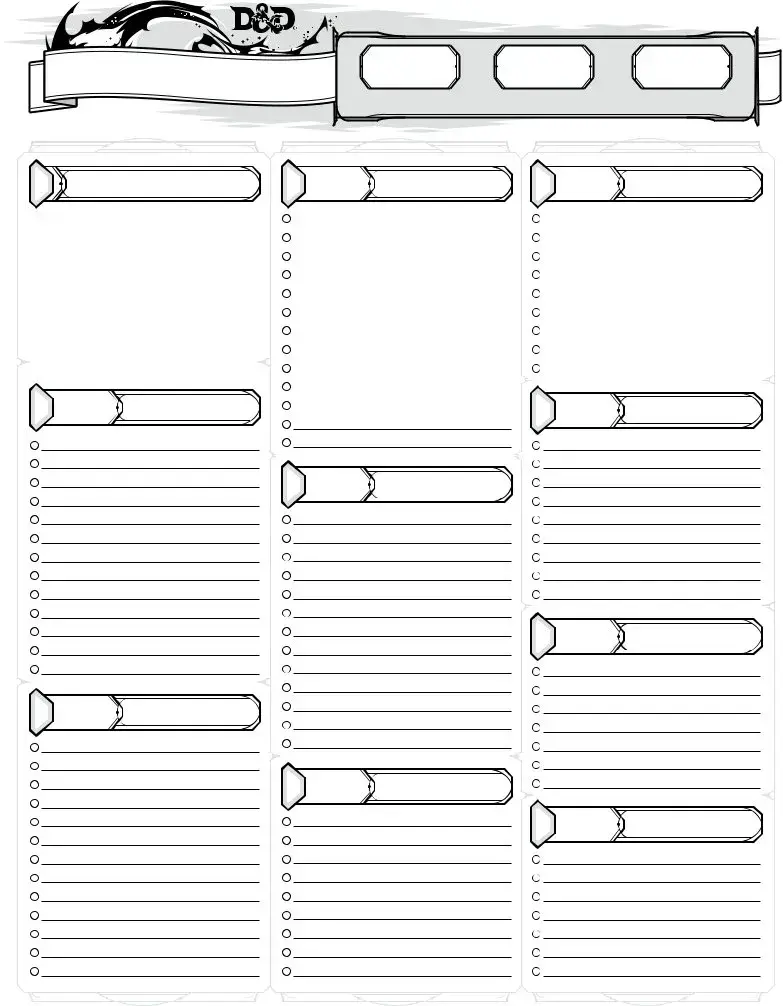-
What is a D&D Character Sheet?
A D&D Character Sheet is a form used by players of Dungeons & Dragons (D&D) to keep track of their characters' statistics, abilities, spells, inventory, and backstory. It serves as the official record of the character's capabilities and accomplishments throughout the game.
-
How do I create a character using the Character Sheet?
To create a character, you start by brainstorming the concept you're interested in playing. Once you have an idea, fill in the basic information such as name, class, race, and alignment. From there, you'll allocate ability scores and choose skills, feats, and equipment according to the rules of the game and your character's class guidelines. It's recommended to consult the D&D Player's Handbook for detailed instructions during this process.
-
What are Ability Scores, and how do I fill them in?
Ability Scores are key statistics that determine a character’s effectiveness in various actions. The main abilities are Strength, Dexterity, Constitution, Intelligence, Wisdom, and Charisma. Each score affects different aspects of gameplay, like combat and spellcasting. Scores are usually determined at character creation through rolling dice or distributing points and are then recorded on the Character Sheet in their designated section.
-
Can I create a digital version of the Character Sheet?
Yes, digital versions of the D&D Character Sheet are available and widely used. Many players find them more convenient for editing and tracking changes over time. Various websites and apps offer digital sheets, some of which automatically calculate stats and other numbers for you.
-
What is the "background" section used for?
The "background" section is for detailing your character’s backstory, including their life before adventuring, key events that shaped them, and their motivations for becoming adventurers. This section is crucial for role-playing, helping both the player and the Dungeon Master (DM) understand your character's personality and how they might interact with the game world.
-
How often should the Character Sheet be updated?
It should be updated after every gaming session or whenever significant changes occur to your character, such as leveling up, gaining new items, or changing abilities. Keeping your sheet current ensures that you have an accurate record of your character’s progress and capabilities.
-
Is there a standard format for the Character Sheet, or can it be customized?
There is a standard format provided by the creators of D&D, which is designed to cover the most common aspects of character tracking. However, players are welcome to customize their sheets or create their own to better suit their gameplay style or to accommodate homebrew rules.
-
What should I do if I make a mistake on my Character Sheet?
Mistakes can easily be corrected, especially on digital sheets. For physical sheets, it's common to use pencil for making changes as needed. If a section becomes too cluttered or illegible, you might consider transferring the information to a new sheet to maintain clarity.
-
Are there any resources available to help beginners fill out their sheets?
Yes, numerous resources are available to assist beginners, including the D&D Player’s Handbook, online tutorials, and character creation guides. Many gaming groups and online communities are also happy to help newcomers navigate their first Character Sheet.
-
Can I use the Character Sheet for games other than Dungeons & Dragons?
While the D&D Character Sheet is specifically designed for Dungeons & Dragons, the basic concept could be adapted for use in other tabletop role-playing games (RPGs). However, you would likely need to modify or create a new sheet to accommodate the different mechanics and statistics of another game.













